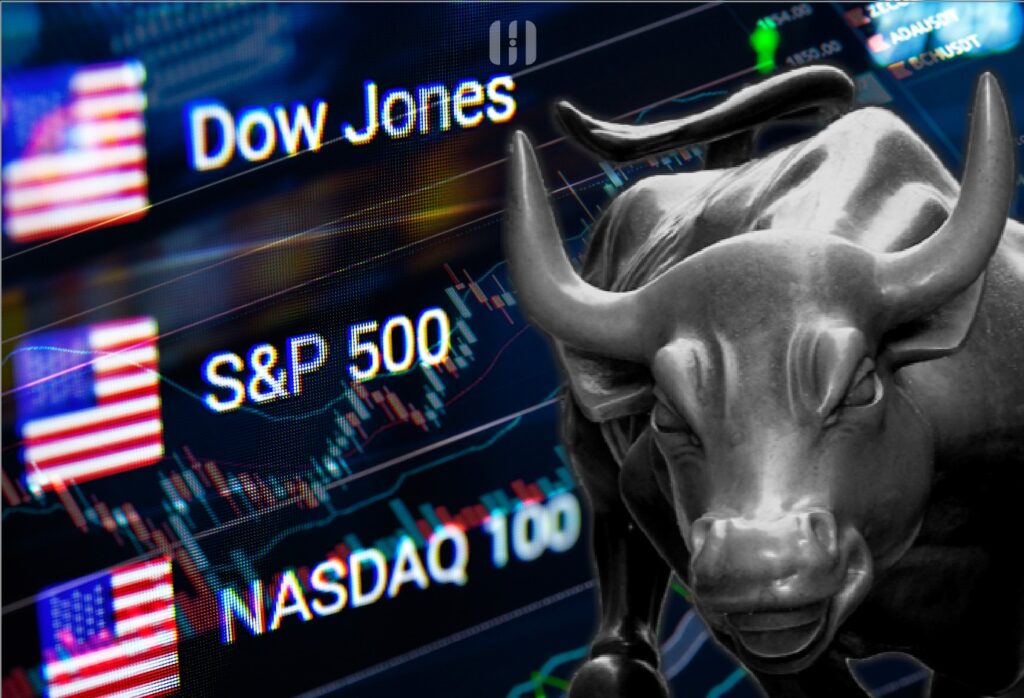Before starting a comparison, it’s important to explain the following: The United States
primarily operates with two stock exchanges in New York: the New York Stock Exchange
(NYSE) and the National Association of Securities Dealers Automated Quotation (NASDAQ),
which is vital to integrate the different indices of companies listed within the American
market. The main differences lie in the following aspects:
- Type of Companies: NASDAQ mainly groups companies in the technology, software, and
computer development sectors; on the NYSE, you’ll find older, more traditional, and more
stable companies due to decades of maturity. - Age: NYSE dates back to 1792 and has held its current name since 1863, making it one
of the oldest stock exchanges in history; NASDAQ was established in 1971, making it much
younger. - Operation: We could say that NYSE is old school, with auctions of buyers and sellers of
stocks using electronic systems traded in a physical space or on the trading floor through
floor brokers. In contrast, NASDAQ operates with a 100% electronic and automated market,
making negotiations dependent on it. - Fees: The administrative costs for trading on each exchange are higher on NYSE, which
is why NASDAQ is more attractive for companies with lower market capitalization. - Location: Both exchanges are located in New York City, but NYSE is situated in the Wall
Street corridor, epitomizing the financial market; on the other hand, NASDAQ is located in
the Times Square area.
Depending on the companies listed on NYSE or NASDAQ, different indices can be created,
including companies from both or exclusive to each exchange. This can lead to different
performances within the same day, although they generally follow a similar trend. For
example, if NASDAQ gains on a given day, the S&P 500 tends to do the same, and vice
versa, due to the interconnectivity in the American markets.
The most representative index in the US is the S&P 500, which reflects the performance of
the 500 most important companies in the country. It includes companies from both NYSE
and NASDAQ.
The Dow Jones Industrial Average comprises the 30 most important companies in the
nation, making it a market benchmark due to its significance. Some well-known companies
in this index include 3M, American Express, Apple, Boeing, Coca-Cola, Cisco, Goldman
Sachs, among others.
In the case of the NASDAQ Composite Index, it only includes companies listed on the
NASDAQ exchange. As a result, it has more exposure to the performance of technology and
innovation companies, though it also includes companies from financial, pharmaceutical, and
industrial sectors. Unlike NYSE, these companies are usually smaller and more
technology-focused. For instance, a Fintech (a financial company that operates through
digital means) adds appeal to investors due to their growth potential through technological
tools.
Which index generates the highest return?
We will evaluate the historical data for the past
10 years along with the performance of the year 2023 up to the end of July, in order to
compare the three indices and validate the results.
Chart 1. Cumulative Performance Comparison of Leading US Indices from 2013 to July
2023, the Last 10 Years.


With the data we can observe in Chart 1, we distinctly identify that NASDAQ has
outperformed over the years, and it can be confirmed that its volatility is higher, exhibiting
more pronounced ups and downs.
As for the Dow Jones, it shows the lowest performance, yet it demonstrates greater stability,
potentially making it a safer bet for global investors.
The S&P 500 occupies a more balanced position between the two aforementioned indices.
From my standpoint, it represents the most appealing risk-to-benefit option among the three
indices.
In the previous box, we can validate the accumulated performance in each index, with an
average annual return (2012 – 2022) of 23.63% for Nasdaq, 16.54% for the S&P 500, and
14.71% for the DJ. Hence, it is crucial that any investment strategy, even a conservative
one, includes a portion of capital in any of these indices, which are among the most
profitable globally, despite any downturns they might experience.
Which index is better? In simple terms, we could say the better index is the one that has
provided the best returns. However, investors’ expectations need to be considered, including
two key factors: risk aversion and the desired liquidity (short, medium, and long-term) of the
accumulated capital along with possible returns.
Higher tolerance for increased volatility is more rewarding with NASDAQ; a more
conservative profile with lower tolerance for market fluctuations will likely see Dow Jones as
the preferable choice.
In the case of the S&P 500, it can be considered the best workhorse when diversifying any
investment portfolio. Therefore, we conclude that all three indices are excellent options, and
the determination of the best one depends on the saver’s profile and the skill of the financial
advisor.




